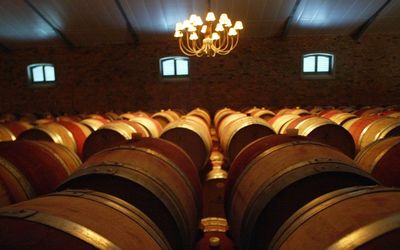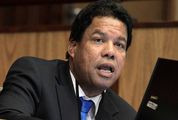IT IS extraordinary what a change in wine maker can do for a property — not necessarily because the prior incumbent was bad, but because the new arrival has another take on style, or gets there as the vines deliver the right kind of fruit.
Andre van Rensburg took over from Martin Meinert at Vergelegen and transformed the reputation of the property in a few short years. Meinert is indisputably one of the Cape’s finest cellar masters — but he left before the vineyards were old enough to produce great wine.
Van Rensburg caught the wave and then made the most of it. By the same token Adi Badenhorst tried to coax his kind of wine out of Rustenberg: it didn’t work.
He went to the Swartland where he has become an iconic figure, and Rustenberg has reverted to its more classically styled, but equally authentic, offering with visible success.
This insight — the coincidence of wine maker and place — came upon me while tasting at Morgenhof, the Simonsberg property owned by the Cointreau family. The cellar had a succession of high-profile wine makers immediately after the famous French wine and spirits family acquired the estate. Jean Daneel worked there for several years before handing over to Rianie Strydom — whose two recent Platter Five Star awards for Haskell Vineyards leave no doubt about her abilities. The incumbent, Andries de Klerk, took over from Jacques Cilliers in 2012. Judging from the line-up I tasted, he has wasted no time in making his mark on the range.
He can’t claim any credit for his predecessor’s intense and biscuity 2010 Cap Classique, but he can share the kudos for the fine 2012s I sampled (an extraordinary Chenin Blanc, an impressive Merlot, and a beautifully rounded Cabernet). However, the 2015s that will be appearing in market — starting from now and over the next year or two (the Chenin, Chardonnay and Sauvignon especially) — are all reminiscent of the glory days of the estate.
Another such example is Nadia Barnard — who was assistant wine maker at Waterkloof before succeeding to the top slot in time for the 2013 vintage. It is clear that she has already put her stamp on some of the production. I was not a fan of the earlier Waterkloof wines — I found them pure and clean but a little too lean — but I’ve become more enthusiastic.
I first noticed a change with the 2012 Cinsaut sampled in late 2013. The wine had been made by Werner Engelbrecht from two blocks of more than 40-year-old vines on the Helderberg and it had the intensity and weight that I had felt was missing from the other wines in the range.
The latest release (the 2014) is even better: it has more texture and concentration, but Barnard has achieved this without losing any of the delicacy and finesse you look for in the variety. Since the transformation here is mainly the work of the wine maker — she sources the fruit from the same two sites — it’s fair to argue that human intervention, rather than any change in the vineyards, played the major role.
Insofar as the Waterkloof wines produced from estate grapes are concerned, better established vines together with the biodynamic management of the property have also contributed to enhanced fruit quality. This much was evident in the 2012 Circle of Life White — a blend of Sauvignon, Chenin, Chardonnay and just a little Semillon. Wild yeast fermented is rounded and nuanced, evolving slowly in the glass and emerging with dimension and depth.
Waterkloof enjoys a spectacular position on the Schapenberg overlooking False Bay. Greg Czarnecki, a Burgundian who worked for many years at the Michelin three-star Lucas Carton in Paris, is in charge of the restaurant and has just been rated one of the country’s top 10 chefs — which makes Waterkloof worth a visit, rather than a mere detour.

Picture: SUNDAY TIMES
IT IS extraordinary what a change in wine maker can do for a property — not necessarily because the prior incumbent was bad, but because the new arrival has another take on style, or gets there as the vines deliver the right kind of fruit.
Andre van Rensburg took over from Martin Meinert at Vergelegen and transformed the reputation of the property in a few short years. Meinert is indisputably one of the Cape’s finest cellar masters — but he left before the vineyards were old enough to produce great wine.
Van Rensburg caught the wave and then made the most of it. By the same token Adi Badenhorst tried to coax his kind of wine out of Rustenberg: it didn’t work.
He went to the Swartland where he has become an iconic figure, and Rustenberg has reverted to its more classically styled, but equally authentic, offering with visible success.
This insight — the coincidence of wine maker and place — came upon me while tasting at Morgenhof, the Simonsberg property owned by the Cointreau family. The cellar had a succession of high-profile wine makers immediately after the famous French wine and spirits family acquired the estate. Jean Daneel worked there for several years before handing over to Rianie Strydom — whose two recent Platter Five Star awards for Haskell Vineyards leave no doubt about her abilities. The incumbent, Andries de Klerk, took over from Jacques Cilliers in 2012. Judging from the line-up I tasted, he has wasted no time in making his mark on the range.
He can’t claim any credit for his predecessor’s intense and biscuity 2010 Cap Classique, but he can share the kudos for the fine 2012s I sampled (an extraordinary Chenin Blanc, an impressive Merlot, and a beautifully rounded Cabernet). However, the 2015s that will be appearing in market — starting from now and over the next year or two (the Chenin, Chardonnay and Sauvignon especially) — are all reminiscent of the glory days of the estate.
Another such example is Nadia Barnard — who was assistant wine maker at Waterkloof before succeeding to the top slot in time for the 2013 vintage. It is clear that she has already put her stamp on some of the production. I was not a fan of the earlier Waterkloof wines — I found them pure and clean but a little too lean — but I’ve become more enthusiastic.
I first noticed a change with the 2012 Cinsaut sampled in late 2013. The wine had been made by Werner Engelbrecht from two blocks of more than 40-year-old vines on the Helderberg and it had the intensity and weight that I had felt was missing from the other wines in the range.
The latest release (the 2014) is even better: it has more texture and concentration, but Barnard has achieved this without losing any of the delicacy and finesse you look for in the variety. Since the transformation here is mainly the work of the wine maker — she sources the fruit from the same two sites — it’s fair to argue that human intervention, rather than any change in the vineyards, played the major role.
Insofar as the Waterkloof wines produced from estate grapes are concerned, better established vines together with the biodynamic management of the property have also contributed to enhanced fruit quality. This much was evident in the 2012 Circle of Life White — a blend of Sauvignon, Chenin, Chardonnay and just a little Semillon. Wild yeast fermented is rounded and nuanced, evolving slowly in the glass and emerging with dimension and depth.
Waterkloof enjoys a spectacular position on the Schapenberg overlooking False Bay. Greg Czarnecki, a Burgundian who worked for many years at the Michelin three-star Lucas Carton in Paris, is in charge of the restaurant and has just been rated one of the country’s top 10 chefs — which makes Waterkloof worth a visit, rather than a mere detour.




















Change: 0.03%
Change: -0.15%
Change: 1.54%
Change: -0.55%
Change: 0.03%
Data supplied by Profile Data
Change: 1.02%
Change: 0.02%
Change: 0.03%
Change: 0.00%
Change: 0.27%
Data supplied by Profile Data
Change: -1.62%
Change: -1.83%
Change: -1.73%
Change: -2.06%
Change: -1.26%
Data supplied by Profile Data
Change: 0.04%
Change: 1.38%
Change: 2.47%
Change: 4.35%
Change: 3.11%
Data supplied by Profile Data